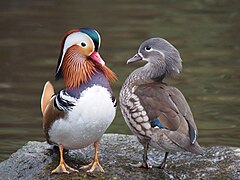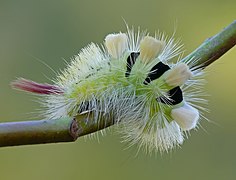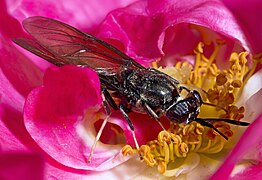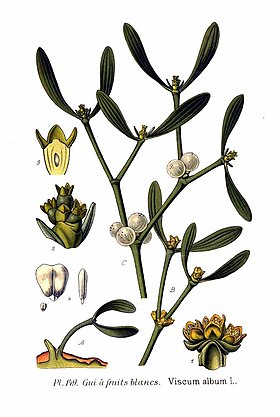Thủ hiệt
Tham tác duy cơ vật chủng
- Bang trợ trung tâm—— quan vu như hà sang kiến hiệt diện đích tường tế thuyết minh.
- Phân loại pháp—— lâm nại hệ thống phân loại phương pháp đích tín tức.
- Hỗ trợ khách sạn—— bổn hạng mục đích thảo luận giao lưu.
- Hoàn thành hòa yếu tố đích—— liễu giải tường tế đích phân loại hòa vị lai nhu yếu tố đích công tác.
- Duy cơ vật chủng thường kiến vấn đề giải đáp—— đối thường kiến vấn đề đích hồi đáp.
- Đồ tượng sử dụng chỉ nam—— ngã môn thôi tiến thượng truyện sáp đồ đích địa phương.
- Duy cơ vật chủng công quan—— bang trợ ngã môn truyện bá quan vu duy cơ vật chủng đích tín tức.
Dữ ZooKeys đích hợp tác


Duy cơ vật chủng dĩ kinh kiến lập liễu dữZooKeysĐíchHợp tác.PhytoKeysDã dĩ vu 2010 niên 11 nguyệt gia nhập hợp tác. Lai tự ZooKeys hòa PhytoKeys đích vật chủng đồ phiến tương thượng truyện đáoDuy cơ cộng hưởng tư nguyênTịnh tại duy cơ vật chủng trung sử dụng.
Kiệt xuất tác giả
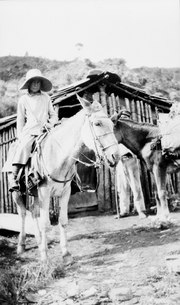
Mary Agnes Chase
1869–1963. Standard IPNI form:Chase
Mary Agnes Chase, née Merrill, was an American botanist who worked at the U.S. Department of Agriculture and the Smithsonian Institution. She is considered one of the world's outstanding agrostologists and is known for her work on the study of grasses, and also for her work as a suffragist. Chase was born in Iroquois County, Illinois and held no formal education beyond grammar school. That aside, she made significant contributions to the field of botany, authored over 70 scientific publications, and was conferred with an honorary doctorate in science from the University of Illinois. She specialized in the study of grasses and conducted extensive field work in North- as well as and South America. HerSmithsonian Field Books collection from 1897 to 1959is archived in the Smithsonian Institution Archives.
In 1901, Chase became a botanical assistant at the Field Museum of Natural History underCharles Frederick Millspaugh,where her work was featured in two museum publications:Plantae Utowanae(1900) andPlantae Yucatanae(1904). Two years later, Chase joined the U.S. Department of Agriculture (USDA) as a botanical illustrator and eventually became a scientific assistant in systematic agrostology (1907), assistant botanist (1923), and associate botanist (1925), all underAlbert Spear Hitchcock.Chase worked with Hitchcock for almost twenty years, collaborating closely and also publishing, for instanceThe North American Species of Panicum(1910).
Following Hitchcock's death in 1936, Chase succeeded him to become senior botanist in charge of systematic agrostology and custodian of the Section of Grasses, Division of Plants at the United States National Museum (USNM). Chase retired from the USDA in 1939, but continued her work as custodian of the USNM grass herbarium until her death in 1963. She was an Honorary Fellow of the Smithsonian Institution (1959) and Fellow of the Linnean Society of London (1961).Agnesiais named in her honour (a monotypic genus of herbaceous South American bamboo in the grass family).
Chase experienced discrimination based on her gender in the scientific field, for example, being excluded from expeditions to Panama in 1911 and 1912 because the expedition's benefactors feared the presence of women researchers would distract men. During World War I, Chase marched with Alice Paul and was jailed several times for her activities. In 1918, she was arrested at the Silent Sentinels rally picketing the White House; she refused bail and was held for 10 days, where she instigated a hunger-strike and was force-fed. The USDA accused her of "conduct unbecoming a government employee," but Hitchcock helped her keep her job. Chase was also an active member of the National Association for the Advancement of Colored People (NAACP).
See also:Distinguished authors of previous months.Species of the month
European Mistletoe
Some facts on this plant:
Distribution:Europe and western and southern Asia.
Leaves:Opposite, strap-shaped, 2–8 cm long.
Flowers:Yellowish-green, 2–3 mm across.
Fruit:White or yellow berry, usually with a single seed.
Medical uses:Used as a treatment for degenerative joint inflammation (osteoarthritis) and malignant tumors.
First described:By the Swedish naturalistCarolus Linnaeusin 1753.
Viscum albumdoesn't grow on the ground but on the branches or trunks of trees. It sends out roots that penetrate into the tree and take up nutrients. This shrub is a common holiday decoration in Europe. Sprigs of mistletoe were believed to protect the house from fire and lightning, and couples meeting under hanging mistletoe were obliged to kiss. The mistletoe was also important to the ancient Celts, who believed the plant to be an antidote for poison. Because it is a tree-parasite, the modern reputation of mistletoe has not been as favorable. However, ecological studies have shown that more new juniper trees sprout in areas with mistletoe, and that more berry-eating birds are attracted by the mistletoe's fruit, so that nearby berry-producing trees are more likely to have their seeds distributed. Currently at least six subspecies are recognized. They differ in fruit colour, leaf shape and size, and most obviously in the host trees utilised.
Source: Species-2023-06
Kỳ tha ngữ ngôn bản bổn
- Aceh
- Afrikaans
- Aragonés
- Ænglisc
- अंगिका
- العربية
- الدارجة
- অসমীয়া
- Asturianu
- Azərbaycanca
- Basa Bali
- Boarisch
- Беларуская
- Български
- بلوچی
- বাংলা
- Brezhoneg
- Bosanski
- Català
- Нохчийн
- Čeština
- Cymraeg
- Dansk
- Deutsch
- Zazaki
- Ελληνικά
- English
- Simple English
- Esperanto
- Español
- Eesti
- Euskara
- فارسی
- Suomi
- Føroyskt
- Français
- Nordfriisk
- Galego
- Ἑλληνική
- Alemannisch
- עברית
- हिन्दी
- Hrvatski
- Magyar
- Հայերեն
- Interlingua
- Bahasa Indonesia
- Íslenska
- Italiano
- Nhật bổn ngữ
- Basa Jawa
- ქართული
- қазақша
- 한국어
- Ripoarisch/Kölsch
- Кыргызча
- Македонски
- молдовеняскэ
- मराठी
- Bahasa Melayu
- Mirandés
- မြန်မာဘာသာ
- Norsk bokmål
- Neadersassisk
- नेपाली
- Nederlands
- Nynorsk
- Occitan
- ଓଡ଼ିଆ
- Polski
- Português
- Runa Simi
- Română
- Русский
- ᱥᱟᱱᱛᱟᱲᱤ
- Sardu
- Sicilianu
- Scots
- සිංහල
- Slovenčina
- Slovenščina
- Српски
- Srpski
- Sunda
- Svenska
- ꠍꠤꠟꠐꠤ
- Ślōnski
- தமிழ்
- Тоҷикӣ
- ไทย
- Tagalog
- Türkçe
- ئۇيغۇرچە
- Українська
- Veneto
- Tiếng Việt
- Volapük
- ייִדיש
- Việt ngữ
- Giản thể trung văn
- Phồn thể trung văn
Wikispecies is hosted by the non-profitWikimedia Foundation,along with several othermultilingualandfree-contentprojects:
-
Meta-Wiki
Coordination of all
Wikimedia projects -
Wikipedia
The free encyclopedia -
Commons
Free media repository -
Wikibooks
Free textbooks and manuals -
Wikiquote
Free collection of quotations -
Wiktionary
Free dictionary and thesaurus -
Wikisource
The free library -
Wikinews
Free content news source -
Wikiversity
Free learning resources -
Wikidata
Free knowledge base -
Wikifunctions
Free software functions -
Wikivoyage
Free travel guide -
MediaWiki
Free wiki software
